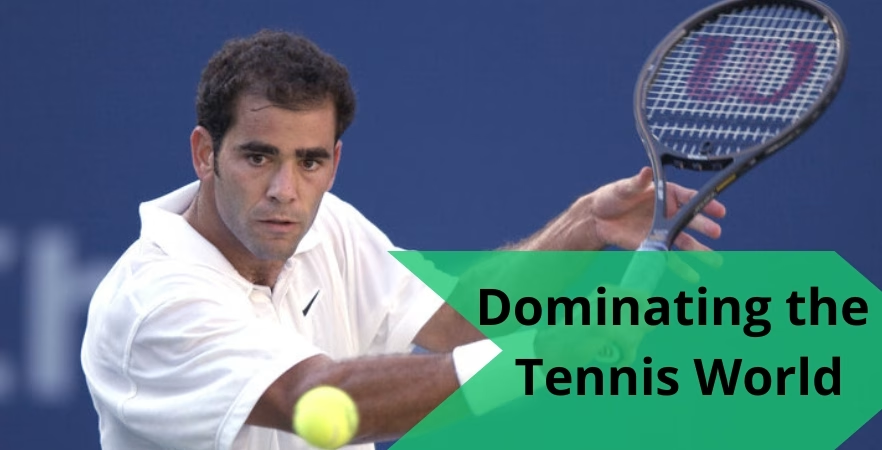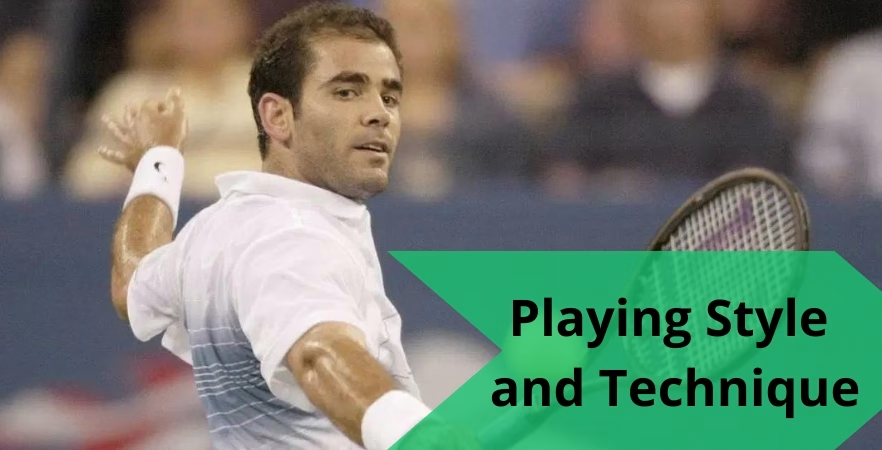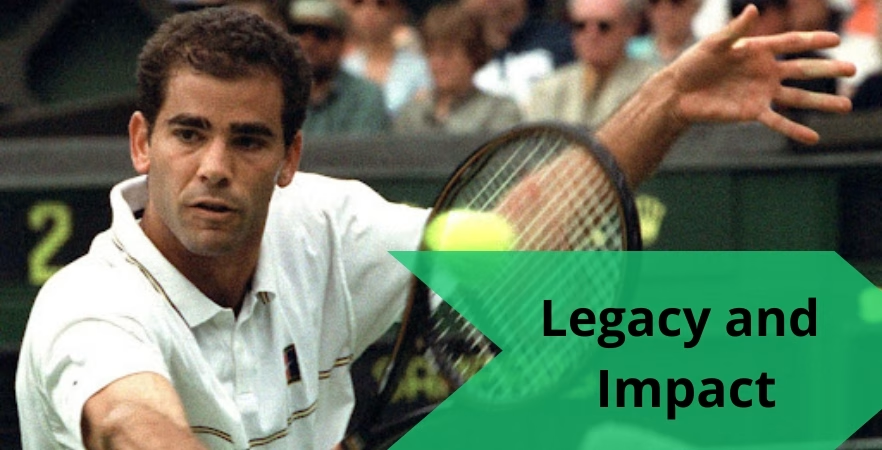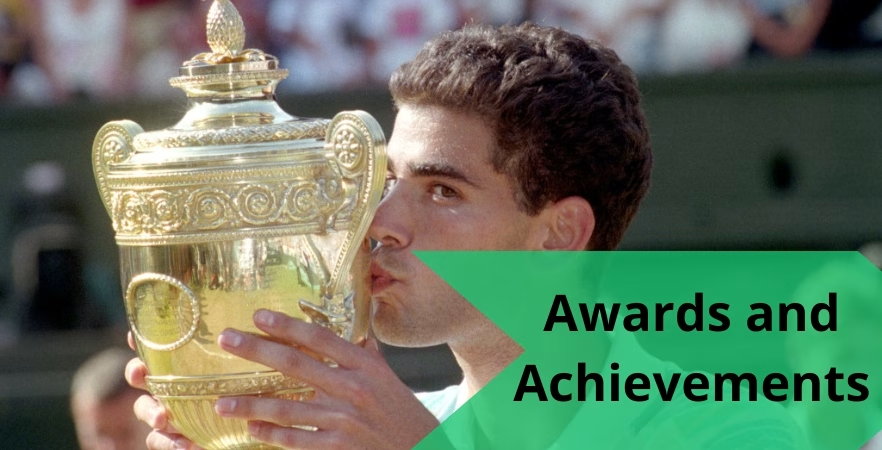This name fell only a little bit as well: Pete Sampras, the man who symbolizes tennis supremacy and for many remains one of its very best players ever. Throughout his career in the sport, he has had a host of accomplishments on ATP Tour as well multiple Grand Slam championships and commanded an intimidating presence altogether.
Sampras went on to inspire a new generation of players himself, leaving an unforgettable legacy in the sport between his first days and retirement.
The way he has dominated the sport of tennis for so long, this proves that what a great Tennis player Pete Sampras is. He has won many Grand Slam titles in his career, 7 of which are Wimbledon crowned and best highlights the lawns. His big serve/serve-and-volley game made him a hard man to beat – and he had the toughness that allowed him to play above his best when it mattered most. Naturally dominant on grass, Sampras also proved his chops both as a versatile all-court player and a hardnosed competitor by becoming the best in the world on three very different surfaces — even contending at Roland Garros.
During his career, Sampras constantly excelled at the professional level tournaments of ATP Tour. Five years, ended all at world No. 1: most ever (six), weeks in the top spot under anyone’s attritional assault on longevity – he was up there a record 286 of them. Some of the most thrilling showdowns in tennis history came from his clashes with Andre Agassi, as their styles and personalities meshed to produce dynamic and unexpected matches. And Sampras’ longevity at the top of his sport and 14 Grand Slam crowns rank him as one of men’s tennis all-time greats.
Early Life and Rise to Fame

Quick Facts Born August 12, 1971 Washington, D.C., USA Height:6-0 Weight:168 lbs (76 kg) Tennis Pete Sampras was born in Washington, DC but his family moved to California when he was very young PEter is an amazing American tennis player who has won several titles and medals for the same. He grew up in a sports-loving family, was allowed to pick his own pursuits and it soon became clear that he had an extraordinary aptitude for tennis. Initially playing right away laid the groundwork for his future achievements in football.
He shared his talent for tennis with coach Peter Fischer, and under the guidance of him Sampras developed to a great player. The emphasis that he received on the serve-and-volley would become a characteristic of Sampras gameplay. Fischer helped Sampras to hone his skills, developing the potent serve and laser-guided volleys that would become staples of his game on tour.
Sampras was an upper echelon junior and his ability surfaced in national tournaments immediately. He turned professional at just 16, and set sail on what would become a much celebrated career. The early years in the ATP Tour saw him making steady progress and having growing confidence on his abilities; all this culminated with his first Grand Slam title.
The US Open was also the site of Sampras first Grand Slam title, in 1990. This victory not only proved he was a force in the making, but also paved his way to what would turn out as the beginning of domination for an era. Only 19 years old, Sampras was the youngest US Open winner in history and still holds that record. This victory was a turning point in his life as this win pushed him to the top of world tennis.
Dominating the Tennis World

The open era record of 14 Grand Slam single titles shows the value in Sampras’s career. In his career, he accumulated 14 titles in Major singles events which were still start classes at this time of the twentieth century (a record standing until finally outperformed by Swiss player Roger Federer). With seven singles titles at Wimbledon, five US Open championships and two Australian Opens under his belt. This is where Sampras’ schedile becomes a measure of his ability to win tournament after high-stakes match: In short, the very stuff that makes player great.
Sampras also has a special relationship with Wimbledon. This is testament to his serve-and-volley brilliance on the grass courts of SW19, accounting for all seven Wimbledons in Federer’s collection. Sampras serve-and-volleyed his way to optimal success on this surface, using the opportunity to finish points with powerful serves and good hands around net. Wimbledon was the last Grand Slam he won, at level with Emerson on 12 titles as well and thus holding onto a good length share of Open Era applicable records. He rode into it by taking all eight editions played from 1993 to 2000; during six or so weeks each summer when Sampras was utterly unbeatable on grass. The Wimbledon title is a major reason why Sampras rates as one of the best in tennis history.
This also is a testament of Sampras’s great consistency in being the best player on earth. He was No. 1 in the year-end rankings from 1993 to ’98, a record six straight years at that time, and held him top spot for a total of 286 weeks as head honcho inside men’s tennis. The fact that he can continue to produce at such a high rate over time is just further proof of his GOAT status. He ruled supreme over the ATP Tour and his potent norm of boundless excellence ensured that he was a force to be reckoned with; an adversary to whom respect must eternally reign.
The feud between Sampras and fellow American Andre Agassi remain an intriguing part to this day. Each man’s style was pretty much the exact opposite of the other: Sampras a serve-and-volleyer, Agassi staying glued to or near the baseline — and they played some truly incredible matches against each other. Their Grand Slam finals and head-to-head slugfests entertained tennis fans in a way not seen for years, if ever. It was a rivalry that brought out the best in each other, producing an fantastic set of matches for tennis fans to fondly remember.
Playing Style and Technique

He was known for an outstanding serve-and-volley game a style of play that has become rare in the modern era. He was nearly unbeatable on fast courts with his devastating, targeted first serves and laser precise volleys. With this aggressive style, he was able to put pressure on his opponents and control the game. Sampras’s game matched well with that of the surface, especially his masterful serve-and-volley play which was most effective on grass.
Probably Sampras’s best weapon was his serve. His serve is powerful and precise, a key to his success. He had arguably the most effective second serve in tennis history, using it to win key points throughout his career. He was just one of those guys who could hit aces and unreturnable serves off the line, so he – I mean no matter how good you were as a returner or if you didn’t even play tennis – it had to be scary facing Roddick in such conditions. That rocket serve set the foundation of Sampras’ game and contributed significantly to his reign over all competitors on the ATP Tour.
Decades before Milos Raonic resembled a super-sized version of himself on serve, Sampras was powered by his best in that shot but had dimension to add with athleticism and excellent net play elements. He could also cover the court well with his speed and make accurate volleys. If we exclude the lack of return game, being able to move quickly and cover ground at the net makes it difficult for any player. His athletic play and volleying skills were especially suited to grass, where his serve-and-volley game could prosper.
Aside from his physical skills, Sampras’s mental toughness and competitive spirit were key to everything he accomplished. I wrote some words concerning his calmness and dedication under pressure, aiding him to perform in GankStars best of 5 matches. It was Sampras’ ability to keep his nerve at the most testing time of any match that really separated him from others. It was his hard-headed resolve to meet challenges head on and win that propelled him into a unique zone of excellence, both in country’s Sania Mirza for Asian domination (he remained the only player from Asia – men or women- with 12 Grand Slam titles) as well at ATP matches across destinations.
Legacy and Impact

In 2002, Pete Sampras walked off the court after his final professional match and it signaled the end of an era in tennis. A win over long-time rival Andre Agassi in the 2002 US Open final was a perfect ending to his storied career. He bowed out with 14 Grand Slam singles titles to his name, a record back then and one that has cemented an enduring legacy ever since. His exit created a gap that has not been completely sealed till this day, and his influence on the game of tennis are still cherished by fans and professionals.
There’s just no denying Sampras’ impact on American tennis, and the game itself. His win would go on to inspire a generation of American players in the form of Andy Roddick, John Isner and more. In terms of playing style the dominating contribution that Sampras made to tennis was his strong serve and volley game, inspiring a legacy in which it would become virtually standard-issue equipment for many ATP players. While his records and titles speak for themselves, his impact on the game transcends what he accomplished on the court directly: The Swiss maestro is widely credited with helping to expand tennis’s profile while inspiring a whole generation of new pros.
Playing Pete Sampras had been an inspiration for a whole generation of players. He set an example for aspiring tennis professionals in terms of dedication, work ethic and results. Many players have mentioned Sampras as a career influence and his legacy is one that inspires many young lot. Sampras has established an exemplary standard for achievements and for the way he approaches tennis as a sport.
Off the court, Sampras is one of tennis most dedicated philanthropists and had given back to the sport on numerous fronts. He has backed many causes and played in events to promote tennis. For him, his efforts to serve the community and promote tennis development are just a token of giving back in return for high commitment he sports over these years. His charitable work and gifts to tennis have insured that his legend lives on beyond just him as a player.
Off-Court Life

Pete Sampras is a family man with altogether* more traditional values clearly appreciated by his many handlers. The icon married actress Bridgette Wilson in August 2000 and have two sons together. Sampras was always family first and chose a low-key existence of his own heart with new loved ones, personal pursuits.
During his career and after retirement, Sampras has been involved in various business ventures as well as being a huge endorser. On the business side of things, he has successful partnerships with Wilson and Nike to go along with a racquet deal through Babolat – all of which indicate his marketability in tennis. His business acumen and plentiful endorsements have made Sampras a wealthy man, able to stay connected with the game of tennis.
More seriously, along with his other business activities, Sampras has pursued a variety of interests. In his free time he likes to golf and play tennis recreationally. While Sampras’ life after the game is a product of interests beyond tennis, it has helped him find balance and fulfilment. His love of sports and competition can be seen in his drive for golf and any other activities.
Awards and Achievements

Pete Sampras had a decorated career with numerous major titles and accolades. His 14 Grand Slam singles titles include seven Wimbledon Championships, five US Open titles and two Australian Open titles. Apart from Grand Slam singles titles, he won many ATP Tour title and was a six-time ITF World Champion. His accomplishments on field state his ability, hard work and brilliance.
Veterans Pete Sampras, for playing career and contribution to tennis in 2007 The accolade is a testament to his contribution to the game and place in history as one of most successful tennis players ever. The selection of Sampras acknowledges his great accomplishments and contributions to the sport.
Aside from his Hall of Fame induction, Sampras has received a host of other honors and accolades. Six-time ATP Player of the Year, several time ESPY Award winner for Best Male Tennis Player These awards give glory to his supremacy in the world of professional tennis as well as a likable character all around sports. Sampras’s many accolades and recognition speak for themselves in reaffirming his place as a truly legendary tennis player.
Conclusion
Tennis Legecy: Pete Sampras the Legend of tennis His success on the ATP Tour has him at or near the top in virtually every mountaintop category, with his record 20 Grand Slam titles as a fine example. Sampras’s game style, mental strength and competitive spirit would be the benchmark for generations of players. He continues to leave his mark on American tennis, its growth and the improvement of it, as well as on charity causes in favor of all children with contributions such that he will never lose importance or meaning. Sampras had an astounding career and his legacy to the sport will forever cement him as one of tennis best players.
